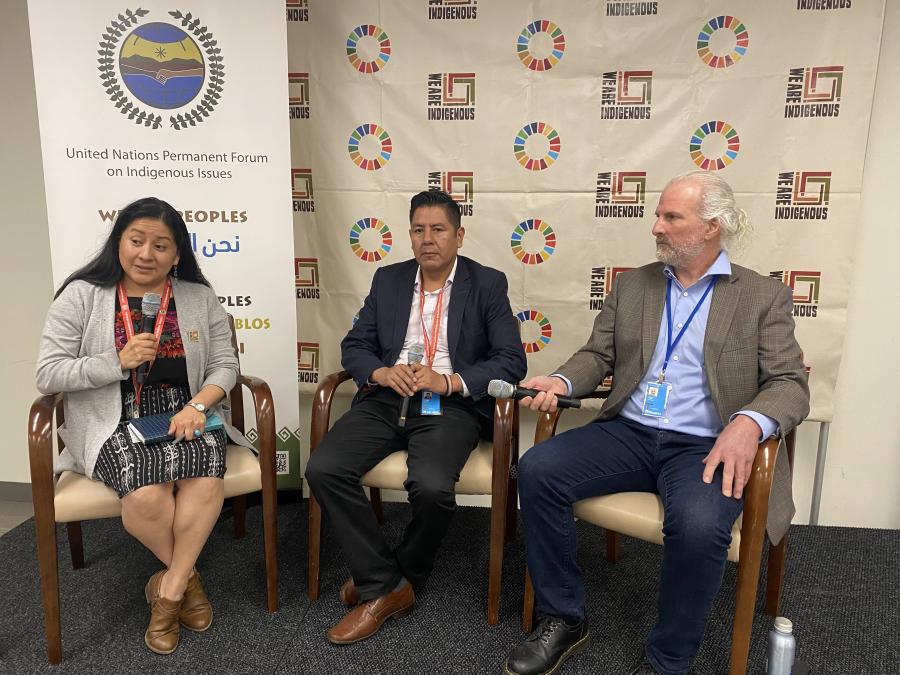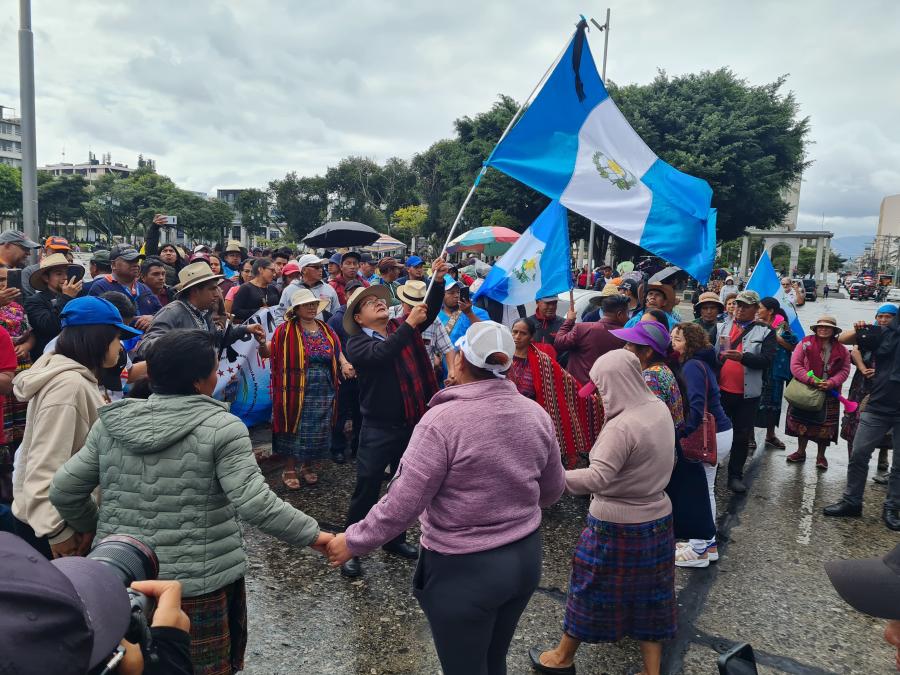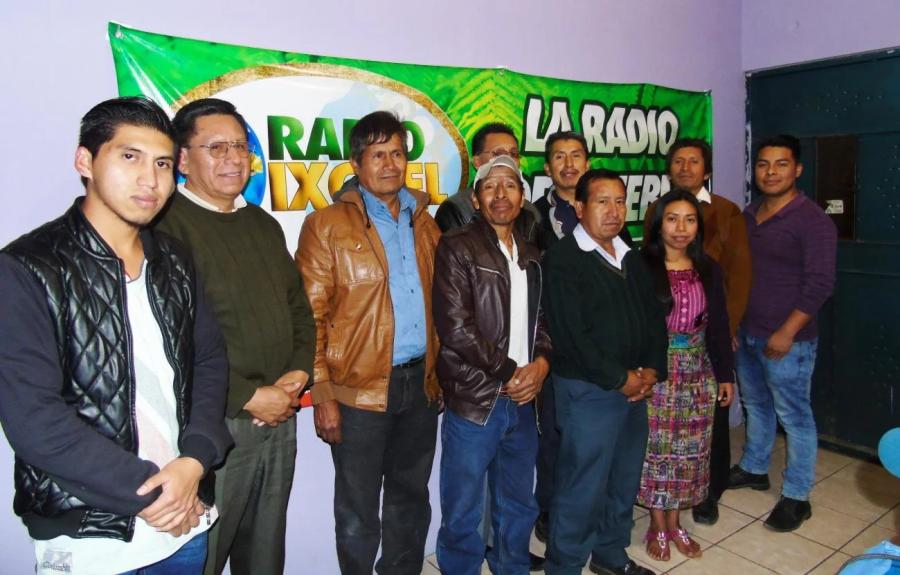
The month of September was an exciting month for New York City as several historic events took place right on the little island of Manhattan. Cultural Survival had the unique opportunity to participate in several events that reconstructed the role of indigenous people in regards to important issues such as climate change. The first of many exciting events was the first ever, People’s Climate March, the biggest march of its kind with over 400,000 people in attendance. The march was divided into sections and led by indigenous people who have been and continue to be at the forefront of the climate battle.
[[{"fid":"62672","view_mode":"media_original","fields":{"format":"media_original","field_file_image_alt_text[und][0][value]":"","field_file_image_title_text[und][0][value]":"","taxonomy_vocabulary_8[und][]":"2676","taxonomy_vocabulary_14[und][]":"2878","field_caption[und][0][value]":"","field_copyright[und][0][value]":"","taxonomy_vocabulary_16[und]":"_none","field_folder[und]":"_none","field_tags[und]":""},"type":"media","attributes":{"height":353,"width":530,"class":"media-element file-media-original"}}]]
Famous people join the march along with indigenous leaders to deman climate justice.
Drumbeats and chants led the crowd through the streets of Manhattan, as thousands of people demanded climate justice. There were many countries represented including Guatemala, Peru, Ethiopia and the Philippines to name a few. Indigenous peoples from all over the world wore their traditional clothing and sang songs about mother earth and the environment in their own languages. “Its not what we are trying to tell the world but what we are trying to tell ourselves…” said Pua Case an indigenous Hawaiian leader “ climate change starts with us and our actions.” Indigenous leaders and participants gathered in Central Park prior to the march for a sunrise ceremony to greet the new day. The ceremony asked for energy, unity and wisdom as Indigenous Peoples issues were brought to the table not only at the march but also at the United Nations World Conference.
[[{"fid":"62669","view_mode":"full","fields":{"format":"full","field_file_image_alt_text[und][0][value]":"","field_file_image_title_text[und][0][value]":"","taxonomy_vocabulary_8[und][]":"2676","taxonomy_vocabulary_14[und][]":"2878","field_caption[und][0][value]":"","field_copyright[und][0][value]":"","taxonomy_vocabulary_16[und]":"_none","field_folder[und]":"_none","field_tags[und]":""},"type":"media","attributes":{"class":"media-element file-full"}}]]
Indigenous leaders gathered in Central Park for a sunrise ceremony before marching the streets of Manhattan.
Right at the heels of the march came the UN’s World Conference on Indigenous People, which addressed the current state of indigenous peoples rights. New and renewed commitments were made by governments, UN officials and Indigenous leaders at the UN General Assembly in New York on important points from the UN’s Declaration on the Rights of Indigenous People. The Outcome Document from the first World Conference represents change to come for future indigenous leaders. The document represents a balance between Indigenous peoples concerns and what member states agree to uphold as priority actions. This Outcome Document is unique in the way it has incorporated Indigenous peoples voices as well as government promises. Another important feature of the document is its commitment to addressing violence against indigenous women. It recognizes the importance of preserving native languages and native knowledge, as well as the barriers facing indigenous youth in terms of education, resources and identity. The Outcome Document will serve as a guideline for governments and indigenous nations alike as they attempt to tackle important issues affecting their communities.
[[{"fid":"62670","view_mode":"media_original","fields":{"format":"media_original","field_file_image_alt_text[und][0][value]":"","field_file_image_title_text[und][0][value]":"","taxonomy_vocabulary_8[und][]":"2676","taxonomy_vocabulary_14[und][]":"2878","field_caption[und][0][value]":"","field_copyright[und][0][value]":"","taxonomy_vocabulary_16[und]":"_none","field_folder[und]":"_none","field_tags[und]":""},"type":"media","attributes":{"height":396,"width":530,"class":"media-element file-media-original"}}]]
World leaders explain the struggle and situation of indigenous people's everywhere at the UN's World Conference.
One common theme connecting all the events that took place in New York was the concept of reciprocity; a concept that was discussed and put to action at the World Summit on Indigenous Philanthropy hosted by the International Funders for Indigenous People. The Summit was planned to follow the UN World Conference in order to continue the momentum among funders and Indigenous recipients. The IFIP summit was highly memorable due to its diverse panelists and participants, as well as its intentionality in fostering reciprocity in Indigenous philanthropy. “Its so incredible to have this opportunity to interact with donors and meet them outside the structure of fundraising… It’s so important to meet each other as individuals so we can learn about one another” said Loreto Bravo, a participant from Mexico.
[[{"fid":"62671","view_mode":"media_original","fields":{"format":"media_original","field_file_image_alt_text[und][0][value]":"","field_file_image_title_text[und][0][value]":"","taxonomy_vocabulary_8[und][]":"2676","taxonomy_vocabulary_14[und][]":"2878","field_caption[und][0][value]":"","field_copyright[und][0][value]":"","taxonomy_vocabulary_16[und]":"_none","field_folder[und]":"_none","field_tags[und]":""},"type":"media","attributes":{"height":396,"width":530,"class":"media-element file-media-original"}}]]
Speakers at IFIP's World Summit on Indigenous Philanthropy speak on the importance of reciprocity in actions and donations.
Many projects are expected to arise from these New York events. Indigenous leaders, government entities and participants all left inspired and motivated to use their resources to continue the fight for Indigenous Peoples rights everywhere.



